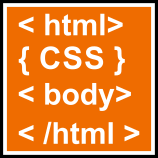Should you teach programming skills to middle and high school students? Yes!
Top 6 Reasons to Teach Programming to Your Students
- Learn Computational Thinking Skills:
Programming makes a student think logically by using algorithms – step-by-step instructions to perform a function. If any of the steps are incorrect or inaccurate, the result has an error. Learning to code requires students to build, practice, and reinforce this type of analytic thinking. - Build Problem Solving Strategies:
Making an error when coding results in immediate feedback: “Something is wrong!” The ability to review, diagnose, and edit code as well as the perseverance needed to solve problems are not only important for coding, but indispensable life skills as well. - Practice Higher Level Thinking Skills:
Language, Math, and Social Sciences teach comprehension, recall, and application learning processes. The analytic aspect of writing code is a valuable higher level thinking skill. Programmers often refer to the task of coding as ‘learning to think’. The designing, planning, and creating aspects of programming also build these advanced cognitive competencies. - Prepare for Career Opportunities:
Computer Science is the ‘new literacy’ for the next century. Computer programming is a valuable skill in the digital age. Jobs for computer scientists are growing with the demand exceeding the supply. Programming is not just a key skill in the information technology industry, but in many other areas, for example:- Manufacturing – designing ways to improve products and production techniques
- Healthcare – managing research data, patient information, security
- Retail – handling inventory management and projecting trends
- Weather forecasting – developing models to predict severe weather
- Arts – creating digital music
- Financial services – managing trading and ensuring security
- Create Technologies, Don’t Just Learn to Use Them:
Technology products used today will quickly become outdated. If we focus only on teaching students how to use devices such as computer apps, smartphones, and tablets, they become passive users. Students can develop a deeper understanding of how digital devices work, how they are created, and how they can be improved by studying the coding needed to run them.
- Empower Students:
When students successfully complete a coding challenge, they feel a real sense of satisfaction and gratification. Students are motivated and engaged in coding tasks. Seeing programming come to life as a web page, app, or other result is exceptionally rewarding.
Consider adding computer programming to your technology curriculum. Your students will benefit right away and in the future.
If you are planning to teach programming refer to the TechnoHTML5 project. It has HTML and CSS lessons for middle school and high school students. The activities are perfect for beginners. Don’t worry if you are new to coding. The instructional materials include detailed assignments, assessment tools, sample files, templates, and enrichment activities. View HTML and CSS lessons from TechnoHTML5.

